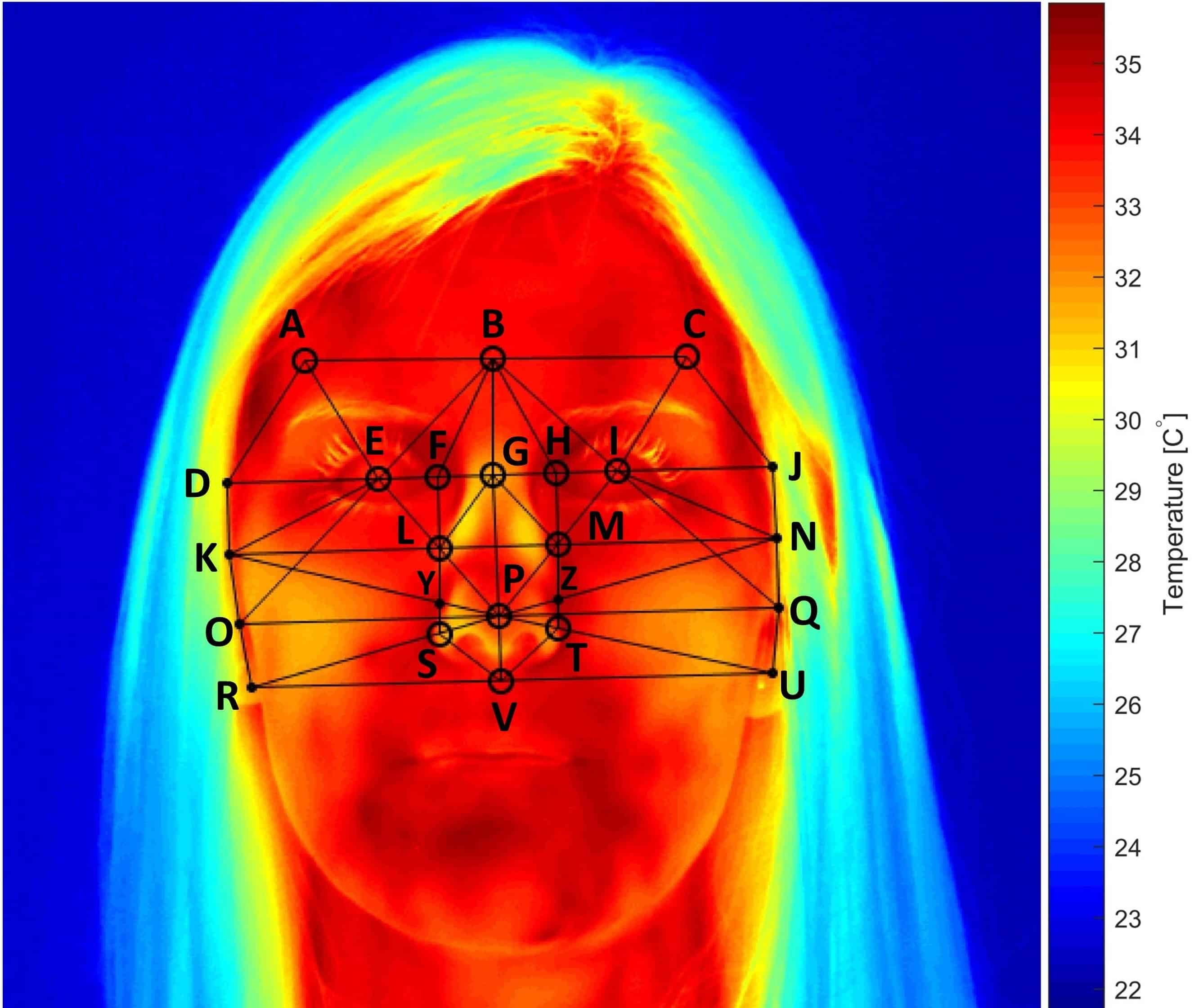Thermal imaging detects mental strain on pilots’ faces
Changes in facial thermal patterns can be used to determine mental workload, according to a new study from Nottingham University.

(Credit: Nottingham University)
Published in Human Factors, the research details how thermal cameras can measure subtle fluctuations in temperature, particularly in areas around the sinuses and nose. When participants carried out increasingly difficult tasks, this area of the face was observed to drop in temperature, as the autonomic nervous system took over and breathing patterns changed. It’s hoped the discovery could lead to a non-invasive method for assessing the concentration and strain levels of pilots and other professionals in high-stress environments.
“We expected that mental demands on an operator would result in physiological changes, but the direct correlation between the workload and the skin temperature was very impressive, and counter-intuitive – we were not expecting to see the face getting colder,” said Dr Alastair Campbell Ritchie from Nottingham’s Bioengineering Research Group.
“With this accurate way to estimate workload, we can develop methods that will assist the operator at times of maximum stress.”
Register now to continue reading
Thanks for visiting The Engineer. You’ve now reached your monthly limit of news stories. Register for free to unlock unlimited access to all of our news coverage, as well as premium content including opinion, in-depth features and special reports.
Benefits of registering
-
In-depth insights and coverage of key emerging trends
-
Unrestricted access to special reports throughout the year
-
Daily technology news delivered straight to your inbox







UK Enters ‘Golden Age of Nuclear’
The delay (nearly 8 years) in getting approval for the Rolls-Royce SMR is most worrying. Signifies a torpid and expensive system that is quite onerous...